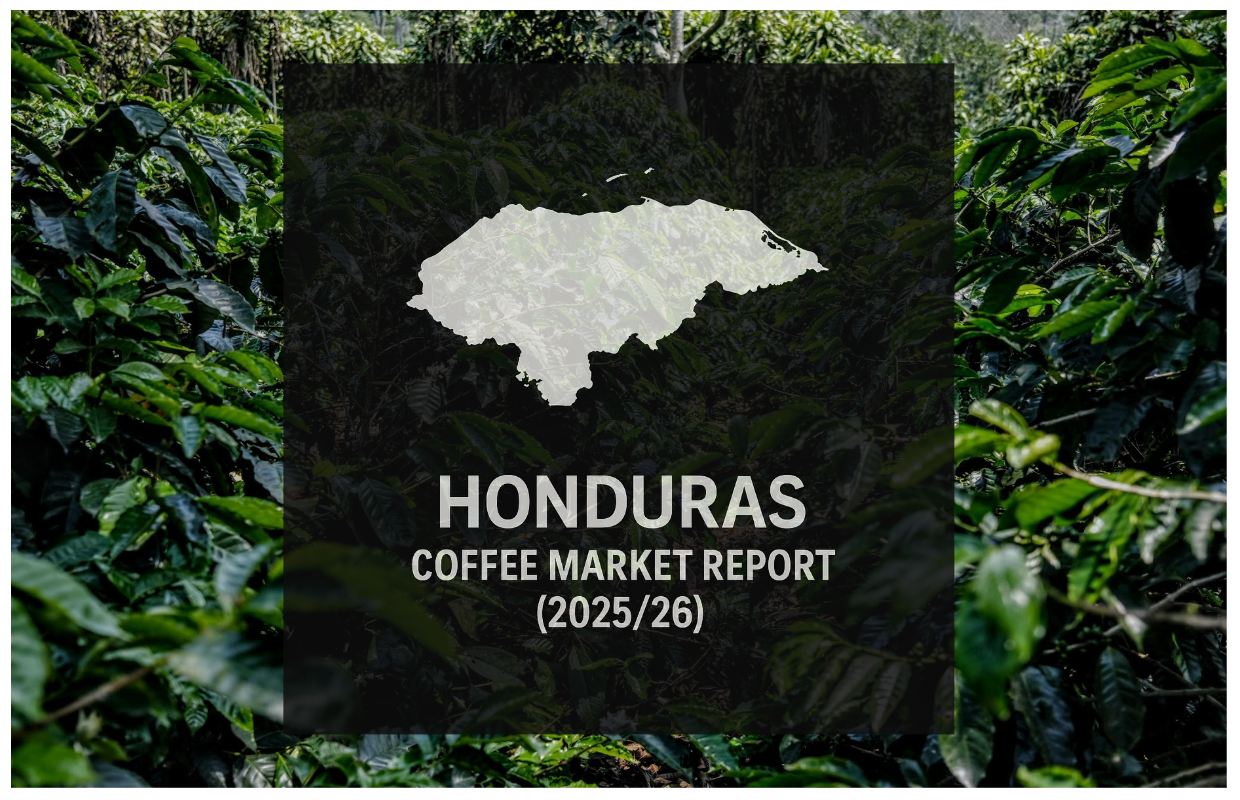Honduras is projected to increase coffee production and exports in the 2025/26 market year, with total output forecast at the equivalent of 5.8 million 60-kilogram bags, up 5% from the 2024/25 year, according to the latest USDA estimates.
This growth follows improvements in coffee leaf rust management, increased labor availability and unfavorable weather conditions among other key global coffee-producing countries, namely Brazil.
Exports are expected to climb to 5.5 million bags, supported by higher prices, increased demand and Honduras’s strong position as the leading coffee exporter in Central America. The country has seen average export prices rise by 81% year-over-year, reaching $345.82 per 60-kilo bag, as of April 2025.
Despite the export gains, domestic consumption is forecast to remain steady at approximately 335,000 bags, reflecting modest economic growth and persistent affordability challenges among consumers.
These and other predictions are outlined in the latest USDA Foreign Agriculture Service annual report on the Honduras coffee sector.
[Note: This is part of a series of DCN stories that will explore USDA FAS annual coffee reports. The information agency typically delivers more than a dozen country-level reports on the coffee sector, each coming from different authors and field offices, with predictions for the upcoming market year.]
 Export Outlook
Export Outlook
-
Total exports in 2025/26 are forecast at 5.5 million 60kg bags, up from 5.36 million in 2024/25. Honduras continues to benefit from global supply disruptions, especially in Brazil.
-
As of April 2025, 2.25 million bags had been exported, up 11% compared to the same period the previous year.
-
Average export price rose to $345.82 per bag, an 81% increase from $191.34 in 2023/24. Total export value doubled to $1.02 billion.
-
Top destinations in 2024 included the United States (1.33 million bags), Germany (911,000), Belgium (484,000), and Italy (261,000). Due to recent trade agreements, South Korea has become one of the leading export markets for Honduran coffee, placing 11th in terms of volume.
-
Honduras ranks as the eighth-largest coffee exporter globally, and the largest in Central America.
 Production and Growing Conditions
Production and Growing Conditions
-
Total production for 2025/26 is forecast at 5.8 million bags, up from 5.52 million the previous year.
-
The increase is attributed to lower rust incidence, stable weather and wider adoption and maturity of rust-resistant Parainema cultivars.
-
Arabica accounts for 100% of national production, and it is grown primarily in six highland regions between 1,000 and 1,600 meters above sea level.
-
61% of coffee farms are located between 3,900 and 5,200 feet in elevation, with cultivation spread across 15 of the country’s 18 departments.
-
Coffee rust incidence is forecast to remain low, averaging 2.9% nationwide through August 2025. The growing regions of Intibucá, Santa Bárbara and Comayagua show slightly higher localized levels.
 Domestic Consumption
Domestic Consumption
-
Consumption for 2025/26 is forecast at 335,000 bags, about the same as 2024/25.
-
This stability follows a 13% drop in 2024/25 from 385,000 bags in 2023/24, caused by inflation and a shift from roasted to soluble coffee.
-
The growing presence of coffee outlets in malls, supermarkets and gas stations is boosting interest, especially among young consumers.
-
Keurig-style pods are gaining traction in Honduras, with increasing availability in major supermarket chains.
 Prices, Imports and Stocks
Prices, Imports and Stocks
-
Ending stocks for 2025/26 are projected to recover slightly to 11,000 bags, after falling to just 6,000 bags in 2024/25, down from 143,000 in 2023/24.
-
Honduras imported 43,000 bags of coffee in 2025/26, mostly soluble and green beans, up 4.9% year-over-year.
-
Top import sources for green beans included Nicaragua and Vietnam. Roasted coffee imports nearly doubled, driven by Canadian and U.S. supply.
-
Soluble coffee imports reached 26,601 bags, sourced from Mexico, the U.S., Colombia, India and others.
 Policy and Sector Support
Policy and Sector Support
-
The government has extended a 12% sales tax exemption on coffee, reducing production costs and improving competitiveness.
-
Key institutional support includes IHCAFE’s “Renew without stopping Production” program, designed to renovate aging coffee farms. The program has reached some 33,000 producers.
-
Climate resilience policies are being implemented by IHCAFE in six phases through 2050, alongside labor training and semi-mechanized harvesting initiatives.
-
International efforts like the USDA-backed MOCCA and MAS+ projects have supported farmer incomes, coffee quality and sectoral reforms. The report did not address the recent gutting of USAID and related funding losses.
 Differentiated and Specialty Coffees
Differentiated and Specialty Coffees
-
In 2023/24, 52% of Honduras’s coffee exports were certified or specialty coffees, totaling 2.58 million bags.
-
Although this was a 16% decline from the prior year, demand remains strong for labels such as Rainforest Alliance, Organic and Fair Trade.
-
Honduras exports coffee under 22 different certifications or third-party schemes, including Starbucks C.A.F.E. Practices and Cup of Excellence.
For complete data tables and market trends, see the full USDA Coffee Annual Report for Honduras (May 2025).
Comments? Questions? News to share? Contact DCN’s editors here. For all the latest coffee industry news, subscribe to the DCN newsletter.











Comment